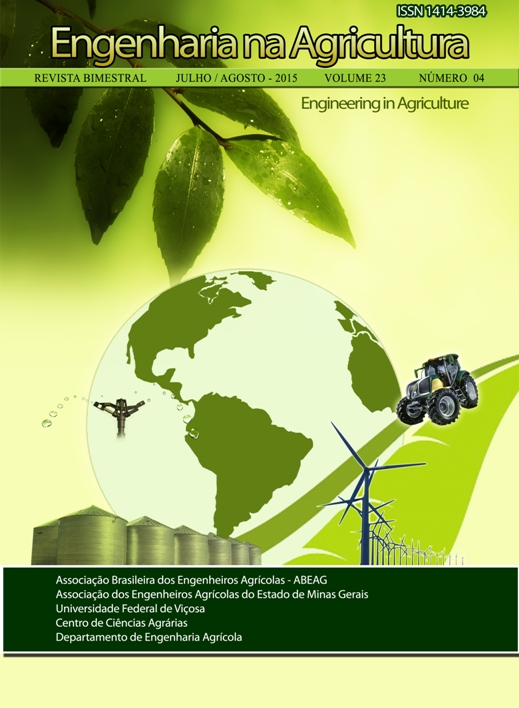PHOTOSYNTHESIS IN EUCALYPTUS UNDER DIFFERENT ENVIRONMENTAL CONDITIONS - DOI: 10.13083/1414-3984/reveng.v23n4p336-345
DOI:
https://doi.org/10.13083/reveng.v23i4.573Keywords:
deficiência hídrica, excedente hídrico, fluorescência da clorofila a, trocas gasosas, eucaliptoAbstract
The objective of this study was to evaluate the photosynthetic responses in a clonal plantation of Eucalyptus in two well-defined seasons: a drought due to water deficiency, and a rainy season with excess water in the soil. The experiment was conducted in the area of the company Fibria S.A, located in the region of Itauninhas, district of São Mateus-ES, mounted in a completely randomized design with two treatments (dry and rainy season) and 12 repetitions for gas exchange, chlorophyll a fluorescence and leaf water potential. According to the results, it was found that water stress in the dry season was sufficient to reduce the water content in plant tissues of the plants, causing a reduction in gs, and consequently decrease in A and E. The lower stomatal aperture during dry season contributed to a decrease in carbon assimilation, decreasing the productivity potential of the plants. The water shortage in the dry season caused no damage to the PS II photosynthetic apparatus, as shown by the ratio Fv/Fm, but reduced the efficiency of light energy capture by the PS II antenna complex, reducing the flow of electrons which may have contributed to reduction in A.Downloads
Downloads
Published
How to Cite
Issue
Section
License
Authors who publish with this journal agree to the following terms:
The author(s) authorize(s) the publication of the text in the journal;
The author(s) ensure(s) that the contribution is original and unpublished and that it is not in the process of evaluation by another journal;
The journal is not responsible for the views, ideas and concepts presented in articles, and these are the sole responsibility of the author(s);
The publishers reserve the right to make textual adjustments and adapt texts to meet with publication standards.
From submission, the author is fully conceding the paper's patrimonial rights to the publication, but retaining the owner of its moral rights (authorship and paper's identification) according to Creative Commons Attribution-Noncommercial.








 Licensed by
Licensed by 